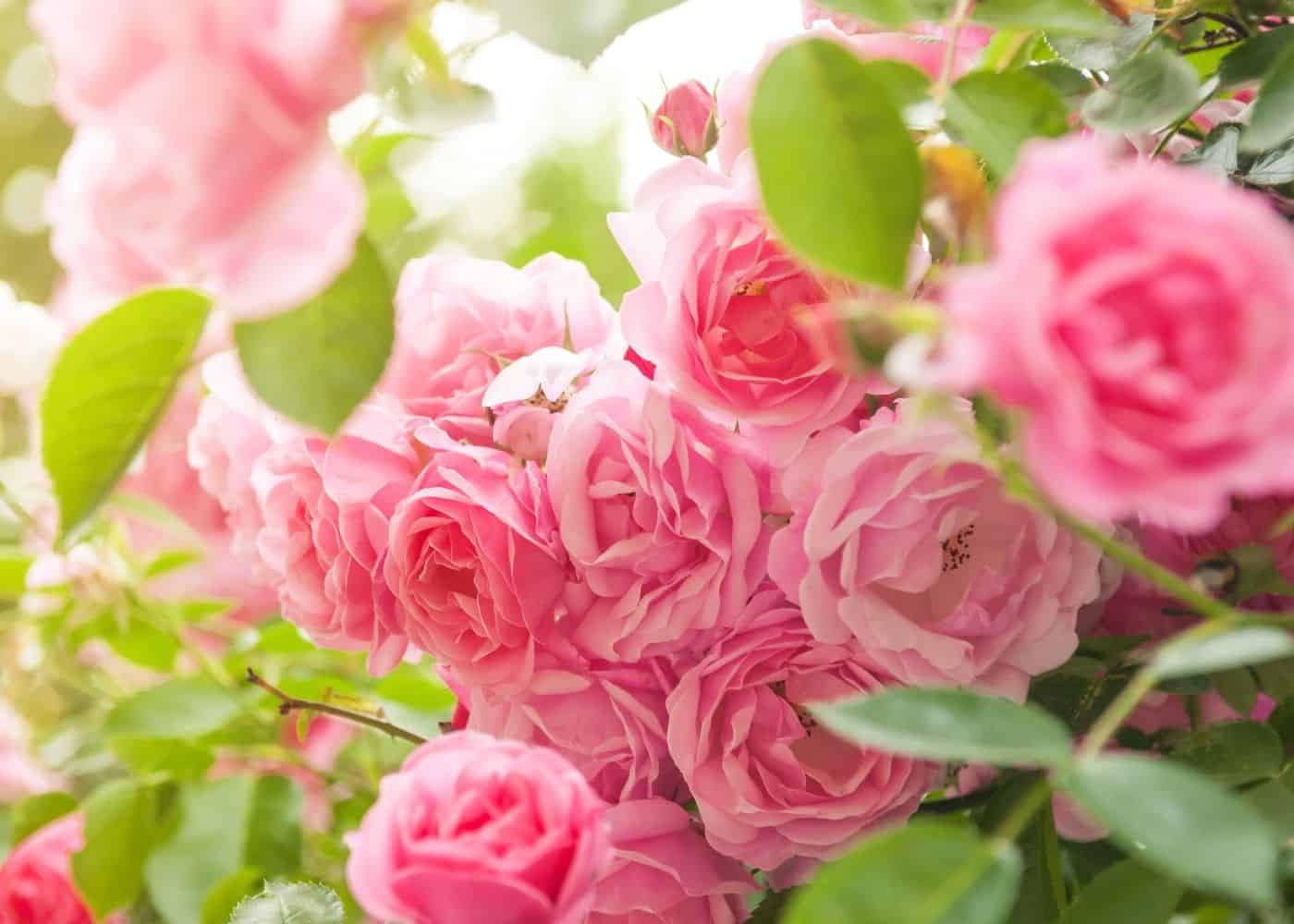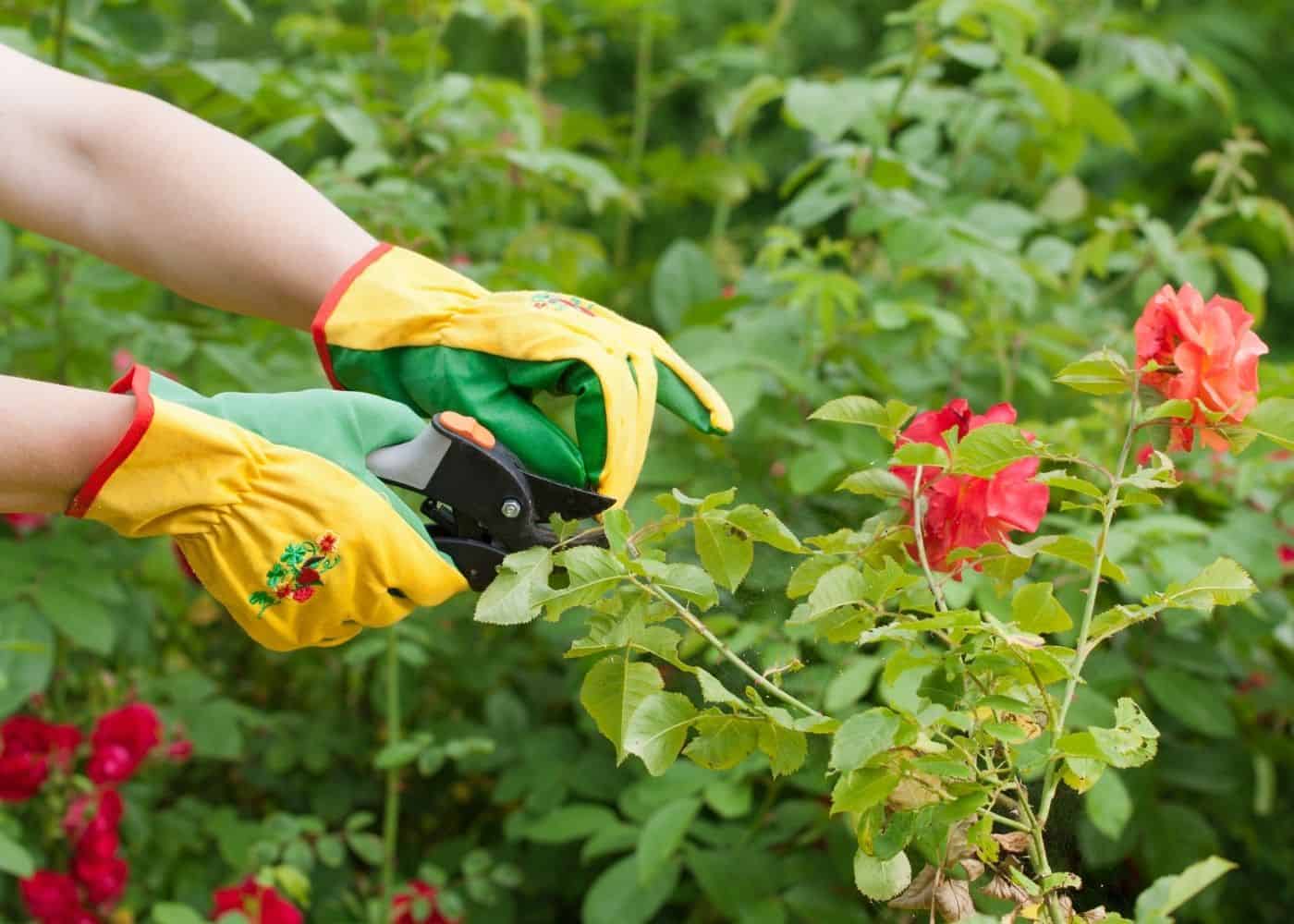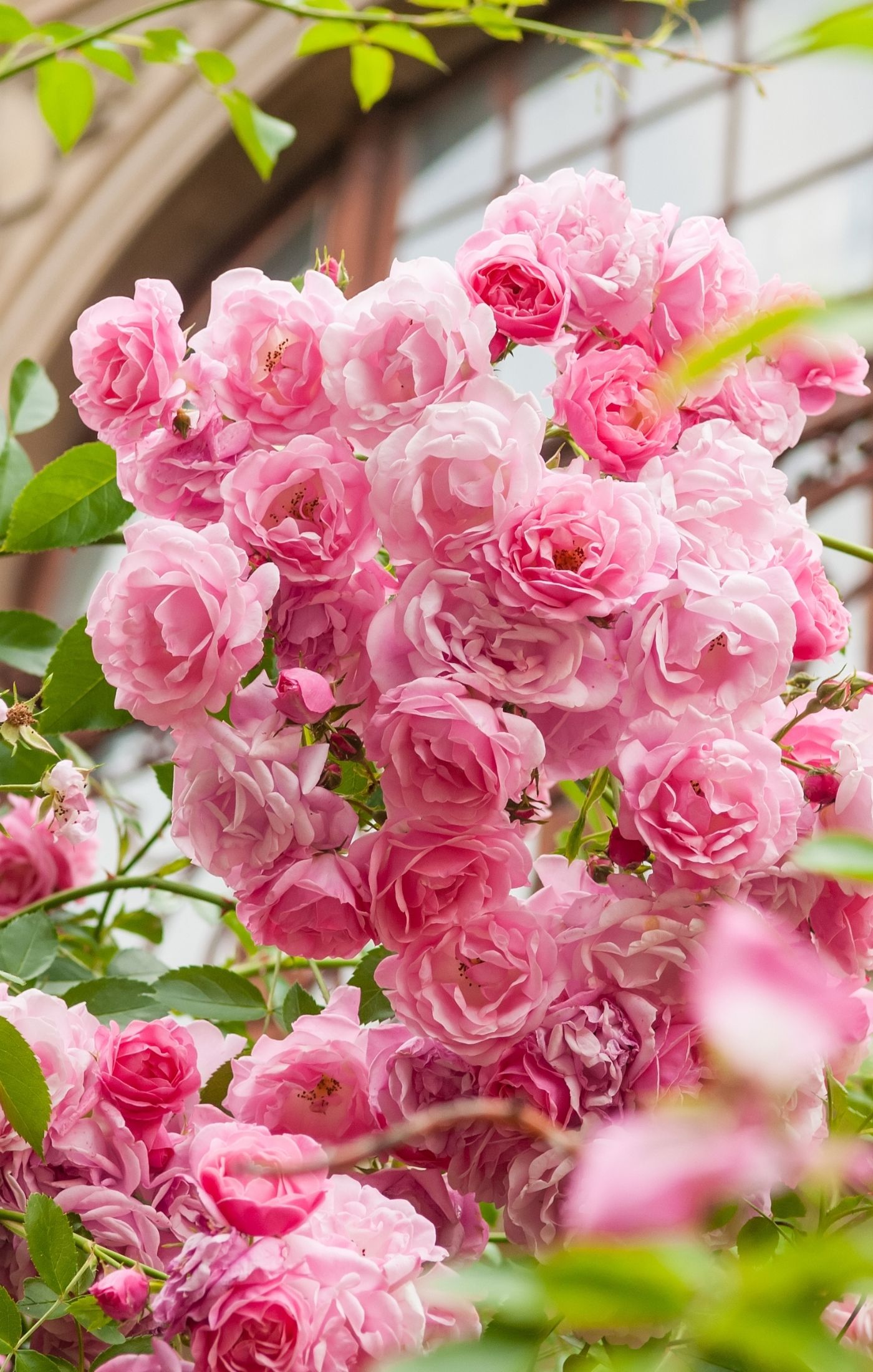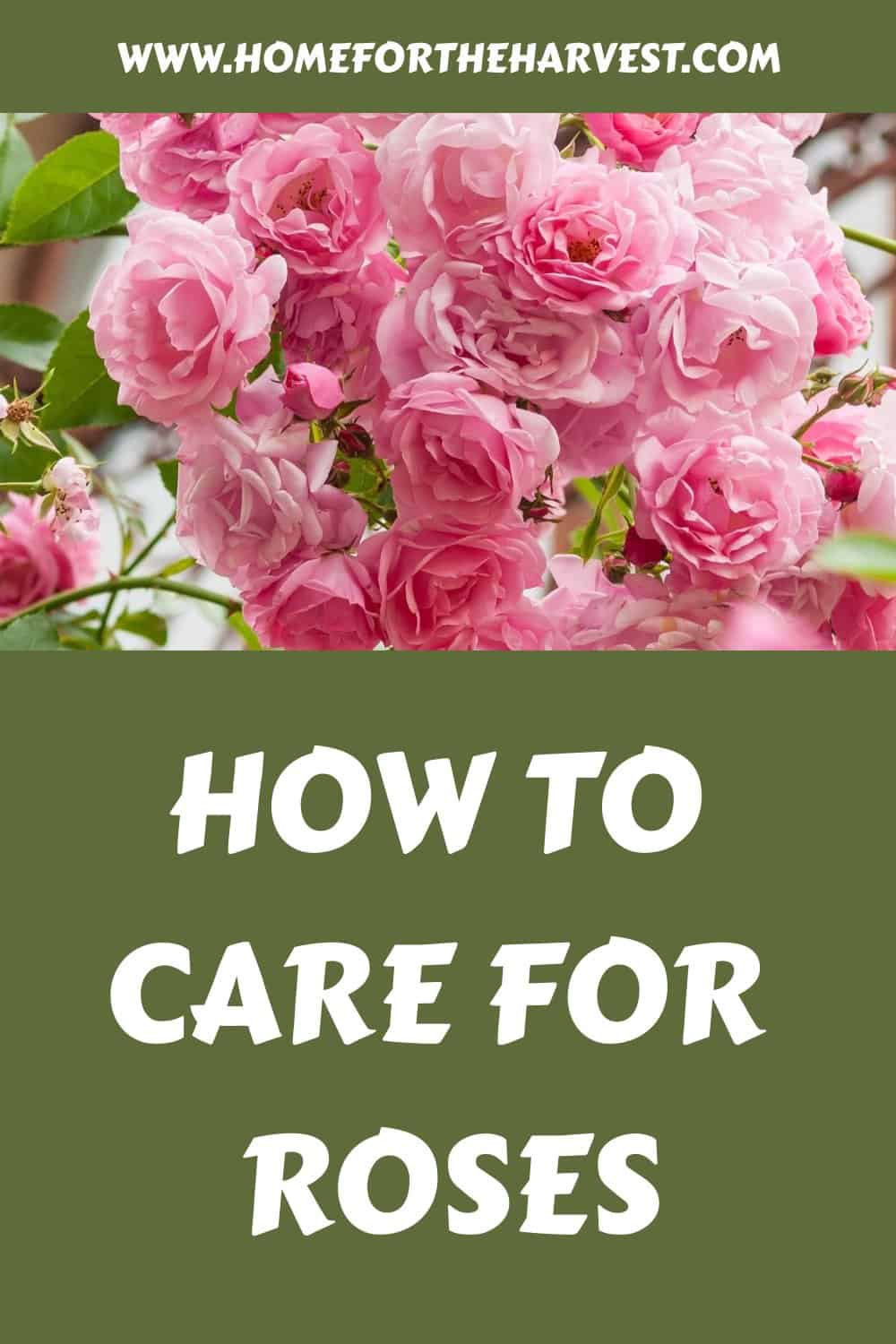Roses can either be easy or difficult to care for and the reasons why are not always clear to beginner gardeners.
If you’re new to rose plant care, start by choosing disease-resistant, hardy varieties like ‘Knock Out’ or ‘Carefree Wonder’. These types require less maintenance and are more forgiving. Plant them somewhere that the leaves will receive 6-8 hours of direct sunlight each day, and hopefully, where the soil isn’t a heavy or rocky clay.
Prune the plant and feed it each year in the early spring. Watch for pests and diseases all summer, and treat any that appear. Remove dead foliage and plant matter from around the base in the fall. In the coldest climates (Zones 2-6), consider applying a protective winter mulch piled up around the base of the plant in late fall once the ground freezes.
The basics of rose care
First and foremost, it’s important to understand the basics of rose care. Roses are a beautiful but somewhat high-maintenance plant, so they require some extra attention.
Roses grow best when they:
- receive full sun, so make sure to plant them in a spot that gets at least six hours of sunlight per day.
- are planted in well-drained soil, so be sure to plant them in a spot that won’t get waterlogged. Avoid planting in heavy clay soil.
- are fertilized regularly, so use a high-quality organic fertilizer made specifically for roses.
- are watered deeply to thrive and produce optimal blooms.
- their soil is topped with a generous layer of organic mulch over the soil around the plant.
- are given one significant pruning each year, usually in early spring.
Now that you know the basics of rose care, let’s move on to the specifics.

Watering your roses
One of the most important aspects of rose care is watering. Roses need about one inch of water per week. Be sure to water them deeply and regularly. If you live in a hot climate, you may need to water your roses more often.
The best time to water roses is in the morning, so the leaves have time to dry out before nightfall. It’s important not to over-water your roses, so be sure to check the soil before watering. If the soil is already moist, there’s no need to add more water.
Fertilizing your roses
Roses need to be fertilized regularly. Use a high-quality fertilizer made specifically for roses. Garden roses can be fertilized in the early spring and late summer with a slow-release balanced organic fertilizer. Specialized rose fertilizer is generally applied every six weeks or so.
Stop fertilizing in the fall as the plant begins to approach winter dormancy in cold climates (read more about fall rose care). Here is a detailed guide to using rose fertilizer on your plants.

Mulching roses in the garden
Roses also benefit from being mulched. Mulch helps to retain moisture in the soil and keeps the roots of the plant cool. It also helps to prevent weeds from growing around your roses. Use a layer of organic mulch, such as bark chips or compost, around your roses. You can also layer organic compost under a thicker hardwood mulch if desired. Be sure to keep the mulch away from the woody stems of the plant.
Mulching roses is also important in the fall:

Pruning your roses
Pruning is an important part of rose care. Pruning helps to promote new growth and keeps your roses looking their best. Garden roses should be pruned in the early spring, typically around the time that forsythia shrubs are blooming. Gardeners in very hot climates may prune in midsummer when the plants are semi-dormant due to extreme heat (read more about when to prune roses).
When pruning, be sure to remove any dead, diseased, or damaged wood. You should also remove any branches that are growing inwards or crossing/rubbing other branches. Once you’ve removed these unwanted growths, you can shape your roses however you like.
Pests affecting rose bushes
Rose plants can fall victim to quite a few different pests in the garden, including aphids, spider mites, Japanese beetles, thrips, rose midges, scale insects, leafhoppers, and rose slugs. These pests can usually be controlled by maintaining healthy plants, attracting beneficial predatory creatures, and applying organic insecticidal soaps or horticultural oils.
Aphids
Aphids are small teardrop-shaped soft-bodied insects that suck the sap out of rose leaves and flower buds. These pests like to feed on young tender growth. Aphids are easy to control naturally with organic gardening methods.
Controlling aphids starts by regularly monitoring the plant, including the leaves’ undersides. Spray off any aphids with a sharp stream of water from the hose. Then spray the rose plant with organic insecticide, insecticidal soap, or neem oil. You can also deter pests with strong-smelling companion plants like allium and garlic (or just spray the rose plant with a garlic & water solution as a deterrent).
Aphids are also very attractive prey to insectivores such as ladybugs, lacewings, damsel bugs, pirate bugs, and even small songbirds. Beneficial companion plants for roses can help to attract many of these creatures. Some great companions for roses include lavender, bee balm, cosmos, penstemon, and veronica.
Spider mites
Spider mites are tiny spider-like pests that suck the sap out of rose leaves. These pests can cause damage to the plant by causing the rose leaves to turn yellow or brown and drop off (although yellow leaves on roses are more commonly caused by black spot disease or lack of water). Spider mites also leave a fine webbing under the leaves.
The best way to control spider mites is to keep an eye on the plant and catch them early. If you see spider mites, spray the plant with a strong stream of water from the hose to knock them off. Then spray the rose plant with organic insecticide, insecticidal soap, or neem oil. You can also try using diatomaceous earth.
Japanese beetles
Japanese beetles are a type of leaf-feeding beetle that can cause serious damage to roses. These pests skeletonize the leaves of the plant by eating the tissue between the veins. Japanese beetles can also eat the petals of roses, leaving behind only the stamen and pistil.
The best way to control Japanese beetles is to handpick them off of the plant and drop them into a bucket of soapy water. The larvae can be controlled with milky spore bacterial products (be sure to follow the application instructions on the package).
Japanese beetles can also be deterred with companion planting. Use scented plants like chives, garlic, allium, and tansy to keep them away from your roses. You can also try to deter Japanese Beetles with nematodes and parasitic wasps. Lastly, work to attract larger birds that eat Japanese beetles, including cardinals, grackles, and meadowlarks.
You can also trap them with a Japanese beetle trap. These traps usually contain a pheromone lure that attracts the beetles. Once the beetles are caught in the trap, they can’t escape and will eventually die. Just be sure to place the traps around the perimeter of your property so as not to draw in any extra beetles to your roses!
Thrips
Thrips are tiny, winged insects that feed on the sap of rose plants. These pests can cause damage to the plant by causing the leaves to turn brown and drop off. Thrips can also cause deformities in the flowers.
The best way to control thrips is to prevent them by destroying their habitat. Remove any dead branches from the area as well as any dead plant debris. Plant other companion plants that may be more attractive to these insects. If you see thrips, spray the plant with a strong stream of water from the hose to knock them off. Then spray the rose plant with organic insecticide, insecticidal soap, or neem oil.
Thrips are also attracted to light-colored rose flowers. So, if you have light-colored roses, try to plant them away from areas where you see a lot of thrip activity.
Rose midges
Rose midges are tiny, fly-like insects that lay their eggs in the buds of roses. The larvae then feed on the inside of the bud, causing it to deform and drop off. The best way to control rose midges is to maintain healthy rose plants and to maintain a 3″-thick layer of organic mulch on top of the soil.
Scale insects
Scale are hard-bodied, limpet-shaped insects with a waxy scaley coating. Rose scale insects are white in color and tend to pierce rose canes to feed on the sap of the plant. Start by scraping off any visible insects. Prune out and remove heavily damaged/infested stems. Then apply a horticultural oil product like neem oil.
Leafhoppers
Leafhoppers are small, wedge-shaped insects that jump from plant to plant. They feed on the sap of the plant, which can cause the leaves to turn yellow and drop off. The best way to control leafhoppers is to maintain healthy rose plants and to prune off any overwintering canes with dark purple spots (indicating eggs may have been laid).
Rose slugs
Rose slugs are actually the larvae of sawflies. They are small, greenish-black caterpillars that feed on rose leaves, leaving behind a telltale “skeletonized” look. The best way to control rose slugs is to maintain healthy rose plants and to pick off the larvae. You can also try spraying the plant with water from the hose or with an organic insecticide.

Plant diseases affecting roses
There are several plant diseases that can affect roses, including black spots, powdery mildew, rust, and Verticillium wilt. The best way to control these diseases is to maintain healthy rose plants and to prune out any affected areas. You can also try spraying the plant with an organic fungicide.
Black spot
Black spot is a fungal disease caused by Diplocarpon rosae fungus. The fungus affects the leaves of the rose plant, causing black spots to form. The leaves then turn yellow and may eventually fall off the plant prematurely. The best way to control black spots is to maintain healthy rose plants and prune out any affected areas. You can also try spraying the plant with an organic fungicide, although these products must be applied quite frequently to be effective.
Powdery mildew
Powdery mildew is a fungal disease caused by Sphaerotheca pannosa fungus. The fungus affects the leaves of the rose plant, causing white powdery mildew to form. This coating tends to appear when nights are cool and humidity is high. The best way to control powdery mildew is to maintain healthy rose plants and prune out any affected areas. You can also try spraying the plant with an organic fungicide.
Rust
Rust is a fungal disease caused by Pucciniastrum epilobii fungus. The fungus affects the leaves of the rose plant, causing orange or red spots to form. The spots then turn black and may eventually cause the leaves to fall off prematurely. Most modern varieties of roses are naturally rust-resistant.
Verticillium wilt
Verticillium wilt is a fungal disease caused by Verticillium albo-atrum or Verticillium dahliae fungus. The fungus affects the vascular system of the rose plant, causing the leaves to turn yellow and eventually drop off. The best way to control verticillium wilt is to maintain healthy rose plants and to prune out any affected areas. You can also try spraying the plant with an organic fungicide.
Gray mold (Botrytis)
Gray mold is a fungal disease caused by Botrytis cinerea fungus. The fungus affects the leaves, stems, and flowers of the rose plant, causing gray mold to form. The best way to control gray mold is to maintain healthy rose plants and to prune out any affected areas. You can also try spraying the plant with an organic fungicide.
Crown gall
Crown gall is a bacterial disease caused by Agrobacterium tumefaciens bacterium. The bacterium affects the roots and stems of the rose plant, causing galls to form. Be sure to inspect the crown knot or graft of any new plants for tumor-like swelled areas before bringing new roses into your garden.






